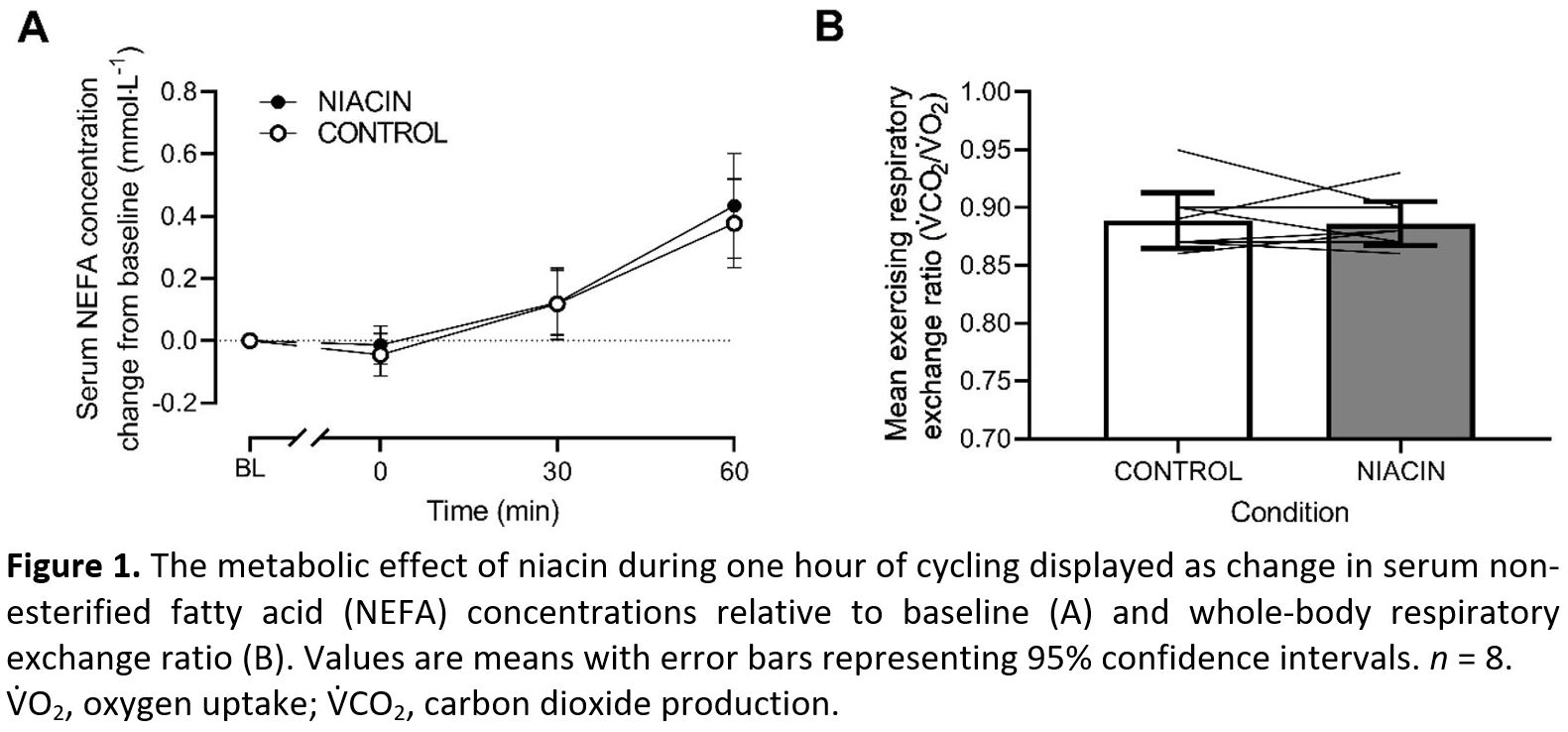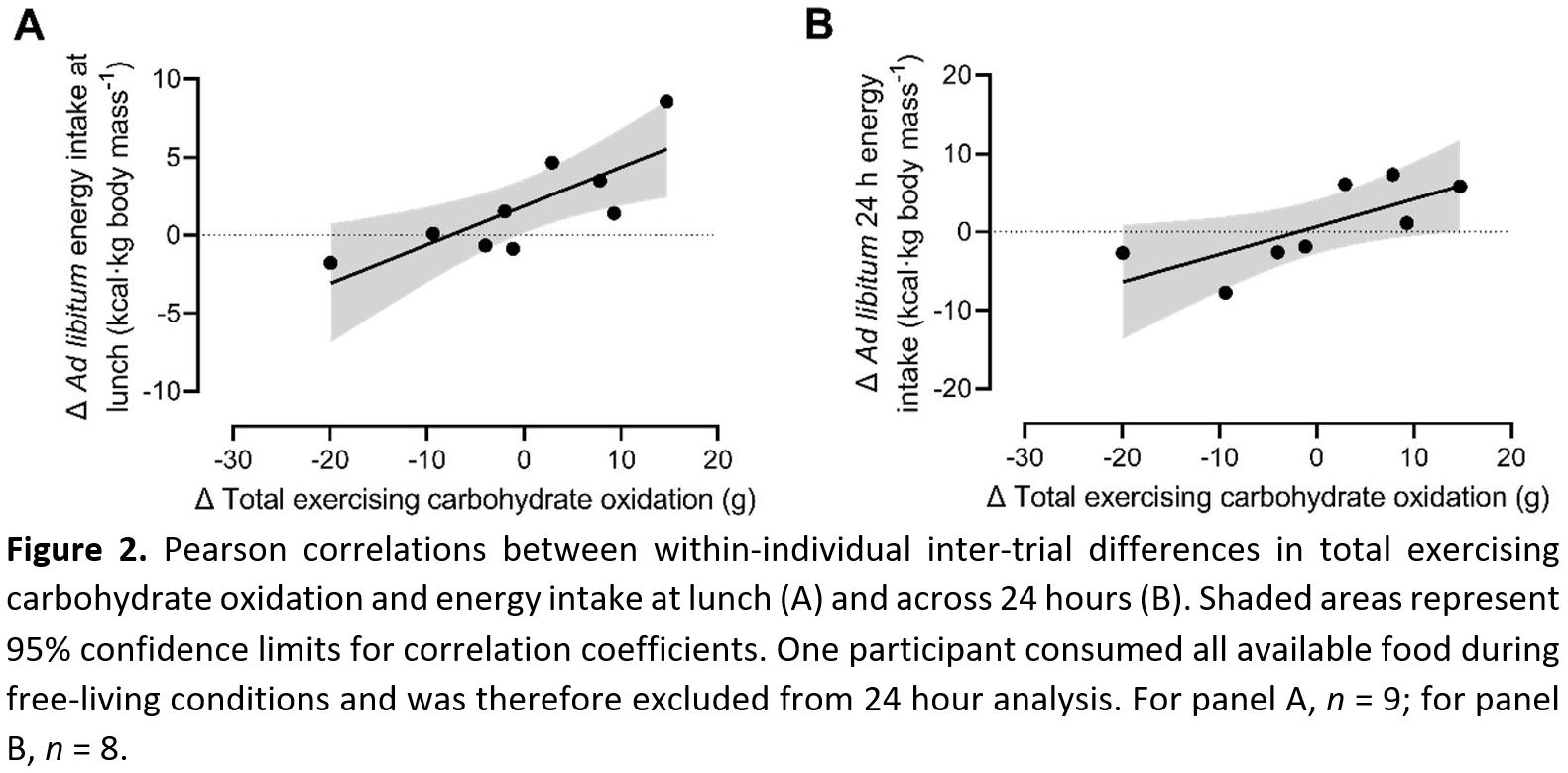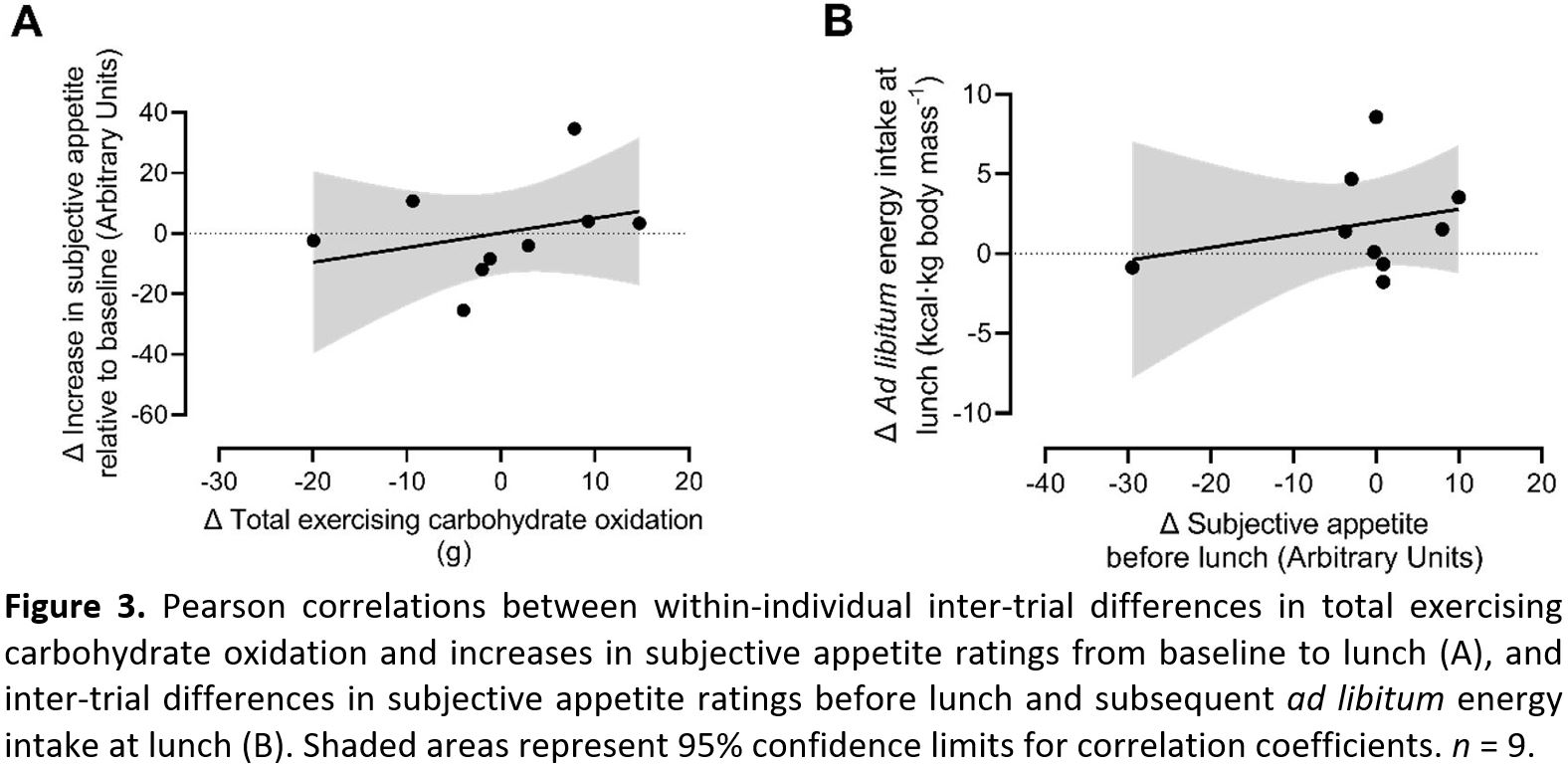Excessive weight gain is attributed to a chronic positive energy imbalance (1), so an understanding of the interaction between energy expenditure and energy intake is vital. Rodent studies have positively correlated both carbohydrate oxidation rates (2) and liver glycogen content (3) with subsequent energy intake, suggesting a greater utilisation of carbohydrate relative to fat may increase food consumption. More recently, Edinburgh and colleagues (4) observed a moderate positive correlation between hepatically-derived exercising carbohydrate utilisation and energy intake compensation in humans. Whether these observations reflect a causal relationship is currently unclear. Therefore, this study aimed to investigate the interaction between exercising substrate utilisation and post-exercise appetite in healthy adults. An increased utilisation of carbohydrate relative to fat during exercise was hypothesised to increase voluntary energy intake and subjective appetite ratings. Nine healthy adults (mean ± 95%CI; age 25 ± 4 y, body mass index 23.0 ± 1.7 kg∙m2, peak oxygen uptake 45 ± 7 ml∙kg-1∙min-1) volunteered for a two-trial randomised crossover study. Participants cycled for one hour at (mean ± 95%CI) 45 ± 3% V̇O2peak, ingesting 25 mg∙kg body mass-1 niacin – to suppress fat oxidation – or placebo. Energy expenditure and relative substrate utilisation were quantified using indirect calorimetry and stoichiometric equations (5). Fingertip blood samples were analysed for serum non-esterified fatty acid concentrations using enzymatic colorimetric assays. Subjective appetite ratings were assessed using visual analogue scales. An ad libitum lunch was provided in the laboratory before participation continued in free-living conditions. For the remainder of the day participants exclusively consumed the test meal to appetite and replicated their physical activity behaviours between trials. As niacin did not inhibit lipolysis (Figure 1A) or influence whole-body exercising substrate utilisation (Figure 1B), inferences regarding the study aims and hypotheses were made using within-individual correlations (r) with 95% confidence intervals (lower bound, upper bound). Strong positive associations were observed between exercising carbohydrate utilisation and energy intake at lunch (r = 0.79 (0.28, 0.95); Figure 2A) and across 24 hours (r = 0.74 (0.08, 0.95); Figure 2B). However, carbohydrate utilisation did not correlate with increases in subjective appetite (r = 0.31 (-0.51, 0.83); Figure 3A), and subjective appetite exhibited little association with subsequent energy intake (r = 0.28 (-0.53, 0.82); Figure 3B). These data suggest that an upregulation of carbohydrate oxidation relative to fat oxidation during exercise is positively associated with subsequent ad libitum food consumption in healthy adults. However, these behavioural responses do not appear to be mediated by subjective appetite perception. Further research is required to establish causality, and to investigate the real world application of these findings.
Future Physiology 2020 (Virutal) (2020) Proc Physiol Soc 46, OC07
Oral Communications: Carbohydrate utilisation during prolonged submaximal exercise is associated with post-exercise ad libitum energy intake in healthy adults
Benjamin Narang1, Javier Gonzalez1
1 University of Bath, Bath, United Kingdom
View other abstracts by:
Where applicable, experiments conform with Society ethical requirements.



